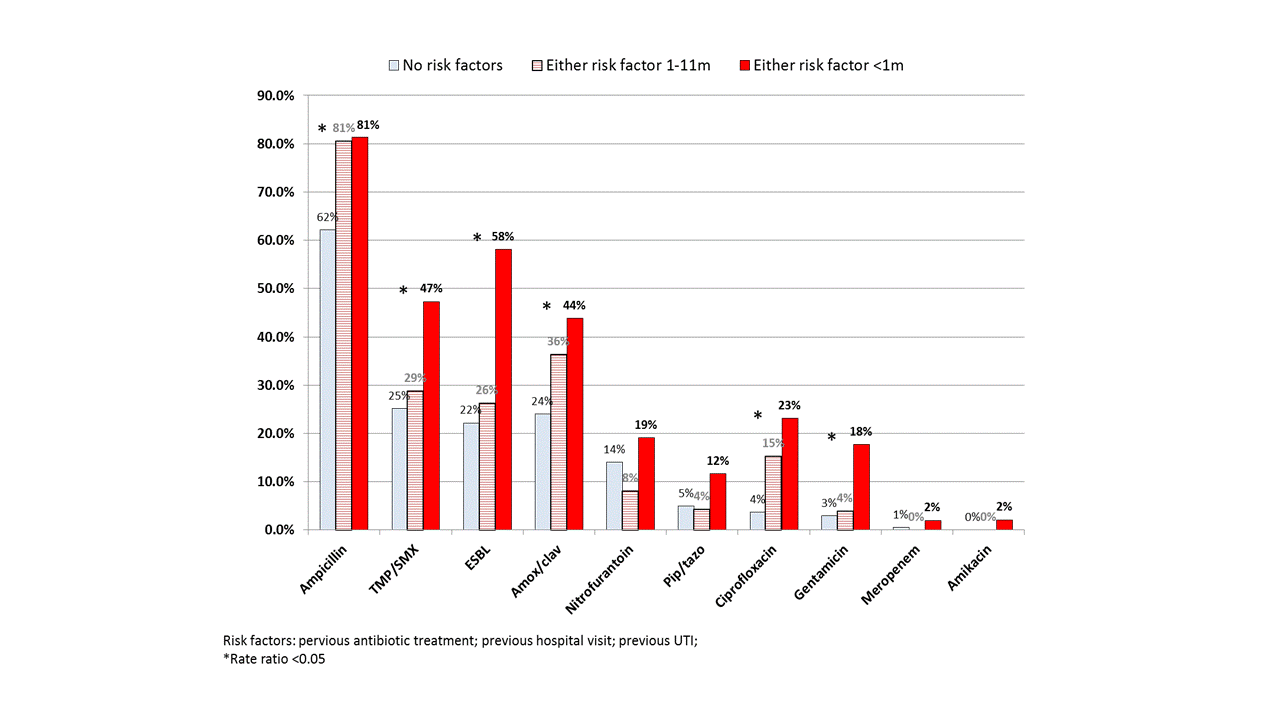
Antibiotic Non-Susceptibility in Gram Negative UTI in Children with Risk Factors; Considerations for Choosing Empiric Treatment
Background: Choosing empiric treatment for urinary tract infections (UTI) requires epidemiological data on antibiotic non-susceptibility (ANS) rates, and risk factors for UTI and ANS in the individual patient.
We assessed ANS in UTI, and its association with risk factors exposure (previous antibiotic treatment, UTI and hospital visit)
Methods: A retrospective, cohort study. Children
Results: Of overall 744 episodes, 80% were Escherichia coli. Higher ANS rates were associated with Bedouin vs. Jewish ethnicity.
Overall ANS rates were 66% for ampicillin; 27-29% for amoxicillin/clavulanic acid, extended spectrum beta lactamase (ESBL) and trimethoprim-sulfamethoxazole (TMP/SMX); 14% for nitrofurantoin; 5-6% for gentamicin, ciprofloxacin and piperacillin/tazobactam; and <1% for meropenem and amikacin.
Antibiotic non-susceptibility rates were highest in episodes with exposure to risk factors
Conclusions: Previous antibiotic treatment, previous hospital admission and previous UTI, especially in the last month prior to the current disease, as well as Bedouin ethnicity, were all associated with high rates of ANS. These findings are important and may assist the treating physician in choosing an adequate empiric treatment for UTI.
Figure: Antibiotic resistance rates characterized by risk factors
